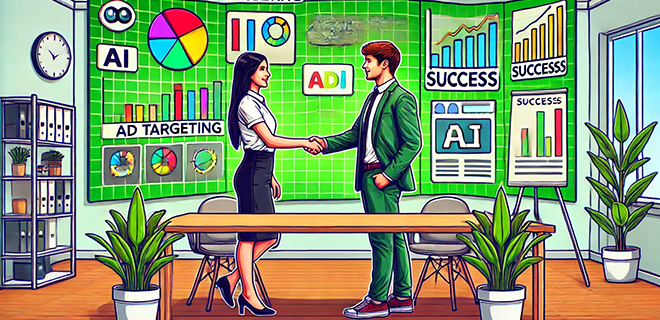
AI empowers publishers to redefine ad targeting, brand safety, and monetization strategies by unlocking content insights, driving revenue, and building smarter advertiser relationships. In this article, Eric Danetz, President at Cognitiv, illustrates how to turn these concepts into actionable success.
Advertisers saw a record number of publisher product announcements this year. Hearst, Dotdash Meredith, Raptive, Paramount, and many more released products that help advertisers reach customers with premium content in new ways. The common thread through these announcements is that AI uses large language models like ChatGPT, unlocking much insight and value from publisher content.
For premium media companies, it’s about time.
To date, digital advertising technology has not particularly focused on content. Advertisers have mostly focused their publisher media buys on audience targeting, and a lot of the infrastructure built up to support that actually worked against premium publishers. Keyword-based and site-based brand safety approaches cut news sites out of a significant number of media buys. The rise of MFA sites as advertisers chased low CPMs and scale while hurting many good publishers.
AI provides publishers with a powerful way to introduce a new approach to the market. Keywords and site lists are blunt instruments that advertisers will happily replace with a more precise, effective alternative, but only if publishers take steps to make it easy for advertisers across the open web. That requires coordinated leadership and some reckoning with powerful ad tech companies to update structures laid in place for two decades.
An Upgrade for Everyone
Publishers can showcase the unique value of their content, with AI tools on their side. Publishers talk about being able to analyze text and video to understand everything from mindset to purchase intent. Brands are embracing these new offerings because they work. Advertisers like Toyota are seeing positive results. Publishers are saying that their targeting solutions are driving a big share of their revenue.
However, publishers could hit a wall if they don’t build processes and infrastructure around these new ways of buying. Including:
- Resetting CPMs: Brands have long had a set of CPM expectations for “contextual targeting.” However, this new form of AI-powered contextual targeting is likely to produce significantly higher results. Publishers need to lean into results reporting to reset advertiser expectations and increase their rates.
- Reshaping Brand Safety: As noted, brand safety has been hard on premium publishers because of its blunt approach. Publishers need to advocate for AI-based brand safety that is just as sophisticated and nuanced as these new publisher-targeting features. Brands won’t be able to unlock the full value of publisher targeting if they are still blocking huge sections of their site because of an outdated keyword-blocking strategy.
- Getting More From Evergreen Content: Publishers have amassed huge stores of evergreen content from how-to’s and recipes to lists and product reviews. This content is super valuable to consumers but doesn’t always command the high CPMs of fresh content that’s timely. With contextual targeting getting a boost, publishers need to rethink how they monetize and categorize evergreen content to make more of what is a top search destination.
- Bundle Products in New Ways: Advertisers ask for a lot in their RFPs, and publishers can now bring brand-new concepts to the table. Creating better proposals that utilize products more smartly, specifically to tie to advertiser goals and advertiser targeting strategies is key.
Setting a New Tone in the Open Market
With the right updates to their strategy, publishers will also need to connect with each other, industry trade groups, and with ad tech partners to reset standards and update the way media buyers are measured and monitored.
If publishers succeed in improving brand safety, not only will they have to change what the brand safety companies default to, the ANA and the IAB will need to update their recommendations, and media buying processes from RFP to auction mechanics will need to follow suit.
When publishers have truly unique contextual offerings, they may find that selling through traditional DSP and SSP pipes isn’t enough to highlight what they can provide. Already, top publishers are finding that they’re selling more direct, and many are curious about how they can have a more transparent relationship with SSPs and curation partners so that they can understand the demand for their content.
The good news is that these changes are all needed because publishers are emerging as AI innovators, with new offerings that bring together deep content insights and better targeting. Their rise follows a larger trend happening on the Open Web, as AI unlocks new ways to understand content and audiences and gives advertisers better options. Working together to support these innovations will ensure that they deliver value for advertisers and publishers alike.